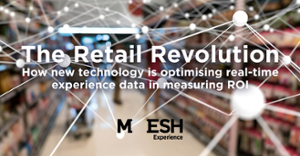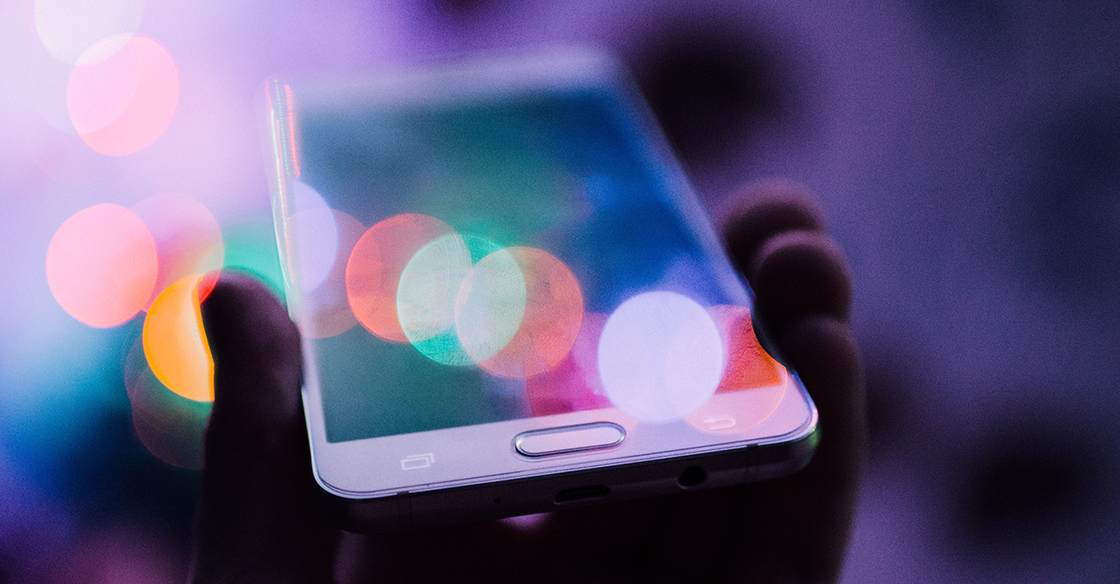The future of retail is transforming before our eyes at a speed we may not have imagined possible. “America is facing a ‘retail refugee crisis’ as thousands of stores shut down and millions of people become the ‘blacksmiths of their era’” (Business Insider, September 2017).
Five years ago, using our Real-time Experience Tracking approach, MESH Experience saw the percentage of people going in store for one category halve in two years with an increase in people going online, particularly to retailer websites. We were amazed when we saw this data at the time. Perhaps we were picking up the signs earlier? Our insight enabled our client to work with retail partners to optimise the path to purchase as shoppers went on and offline at different stages.
With a retail banking study we are currently running in the UK, month after month we are seeing news of branch closures. At the same time the mobile banking apps are transforming people’s relationships with their banks and putting customers back in control. I was at a Brand Finance event a few weeks ago when Alderman Peter Estlin from Barclays was saying that branch closures may have been a mistake. Yes, less people are transacting in banks, but they can provide other uses for the community. What if you could go to learn life skills? If you could find out how to download your transactions and create a budget?
At the same time as shops are closing down, others, like the Magnum Pleasure Store, are popping up! Brands are starting to realize that creating an amazing experience around the consumption and purchase moment should be viewed as a media touchpoint – a brand building advertising activity. The immediate sales are not the main point. The Magnum Pleasure Store benefits from the spread of communication in social media, from an authentic source – those who have enjoyed their personalized ice cream.
Whilst we spend lots of resource on measuring TV advertising, we spend surprisingly little on retail. These are the gaps clients have mentioned:
- We know how much as are spending and what sales we are getting but we don’t know whether the activity drove the sales.
- We are spending significant amounts on pop-ups/events/displays and cannot quantity ROI.
- Who is being reached and with what engagement?
Millions of dollars around the world are spent on retail display but when asked by the Path to Purchase Institute how they measured the effectiveness of P-O-P, 53% of clients claimed to do so through sales with no-one measuring via technology. Existing measures from brand tracking modules to exit interviews, ethnography, video in store and eye-tracking all have inherent problems from poor quality data to cost.
One solution is MESH Experience’s new Real-time Retail camera ethnography. We have worked with Emotion Research Lab to deliver an approach that captures shoppers’ reactions in the real world in real time through installing small cameras onto displays. These do not video people but pick up data points.
So what are the key points versus other approaches?
- Firstly, it captures people’s reactions in the real world in real time. We aren’t asking people to remember what they did.
- It can identify if the display has stopping power and engages the viewer.
- It can collect basic demographic data to see which groups stop and engage with the display.
- It is tech-enabled but doesn’t have the privacy issues of video because we are not picking up any personal information, we are simply collecting data points.
- It is scalable and cost-efficient. This has been a challenge for older approaches.
There is one thing creating the tech but we need to harness this. MESH Experience believes that for brands to succeed in the new world, marketers need to take an Experience Driven Marketing approach.
Our work over the last 12 years has resulted in us creating a model of how experiences build brands. Share of Experience (a measure that includes paid, owned and earned brand encounters) has a stronger correlation with market share than Share of Voice. A Positive Experience has 3 times the impact of a neutral one on brand consideration. Simply put the more experiences a brand creates and the more positive these experiences are, the more the brand will grow.
We understand how powerful retail experiences have been in relation to TV or consumption experiences. We know what creates a positive experience – for example sampling normally works very well. So the learning we are getting out of the new tech is enhancing our Experience Driven Marketing view of the world.
Here are some of the questions we can start to answer with this approach.
- Does my end of aisle display work better than an in-shelf feature?
- Does brand building display work better than price offer display?
- On which metrics in the purchase funnel does my seasonal display work versus my occasion-led display?
- Which stores does the same display work in most successfully?
- Which days of the week/times of day does my display work most successfully?
Let’s look at a couple of case studies.
For Unilever, we took a store in Sao Paulo where we wanted to assess the impact from a change of store display for Knorr Seasonings. There was a new healthier seasoning range with natural flavorings and 25% less salt. To communicate this there was a shelf hanger “stopper” placed on either side of the product range. We compared two periods to see the change in shopper display interaction. The first, during November, had no display. The second, during December, had the display material. To contextualize our data we used Google’s Popular Times feature. Of course, for a bigger study, we would envisage putting in cameras to understand footfall to the store and to the aisle and contextualizing with sales data, the weather, and other data streams.
We also created specific terminology:
- A viewer is someone who looks at the display for at least a second.
- Noticeability is the number of viewers.
- Attention is how long the viewers looked at the display.
- Engagement is the percentage of the viewers who displayed a happy, smiling emotion whilst looking at the display.
These were some of the results.
- Even with relatively small pieces of display (the Shelf Stoppers) we see a massive lift in Noticeability with over three times as many viewers. Of course, we need to better understand why. Maybe more people walked down the aisle? By putting another camera to observe traffic we could account for this.
- Noticeability is relatively flat when there is no display (except around lunchtime on weekdays) but, for the display period it seems to stand out around peak times. Is this new information catching people’s eyes?
- The display seems to be noticed more by men than women and this is particularly the case during those peak shopping times.
- On average people pay attention for just 3 seconds. And most peak time views only last a second. So it’s important that your message is easy to take out.
- The percentage of people displaying positive emotions is fewer with display than no display. Is this because we are capturing the attention of those not looking to buy stock cubes. We pick up a variety of emotions so there is plenty more analysis needed to understand how display is impacting on people’s emotional responses. For example, are they irritated to be interrupted in their shopping? Even if the display is not generating engagement, as it is getting noticed it should be increasing awareness and therefore longer-term brand building.
Our second case study was for a different category and client in the US. In this study we had three cameras – one at a front end cap, one at a rear end cap and one on the shelf. What we noticed here was:
- The front end cap received the most views (as would be expected due to location in the store). So if it was reach needed, this would be the spot to buy.
- The rear end cap had more attentive viewers. People spent longer and had higher levels of engagement. This suggests that different store locations may require different types of display. In a more secluded spot, it could be possible to communicate a longer brand message.
- In addition to “viewers” we had “shoppers captured” – this was all faces captured and included those who looked for less than a second. We saw an extremely high correlation between “shoppers captured” and sales – 0.96, indicating that traffic is vital in choosing locations for display. And there was a stronger correlation between those brands displayed and sales than those not displayed, indicating that displays work to drive sales.
- Most views only last 1 second and the average attention for the front end cap was just under 3 seconds – a very similar finding to the finding in Brazil with Knorr.
In terms of implications, we are seeing billions spent on display with a dearth of evaluation. Technology can help marketers understand the return on their investment. With real-time camera ethnography we can see how many people the display is reaching – much more than store traffic, location matters. We can see whether the display is engaging people and doing a brand building job. And we can see if the display is converting to sale. Moreover this new technology enables us to do this cost efficiently without the privacy issues of video.
We are living in times that demand a collaborative approach. Our partners include Emotion Research Lab who are developing the technical solution, our academic partners, Cranfield School of Management, who are working with us on the data analysis, our clients, especially Unilever, who are showing how results need presenting to impact within their organizations and the retailers for facilitating tech in their stores. We see our job at MESH Experience as turning the data into metrics that mean something for our clients to help them take quicker and smarter decisions about their marketing and display investment.
Yes, we are living in rapidly changing times when it comes to retail. And as the role of the bricks and mortar touchpoint transforms from transactional to experiential it is even more important that we provide the measurement tools to match.
Download the full Retail Revolution presentation for FREE to learn more about how new technology is optimising real-time experience data in measuring ROI.

